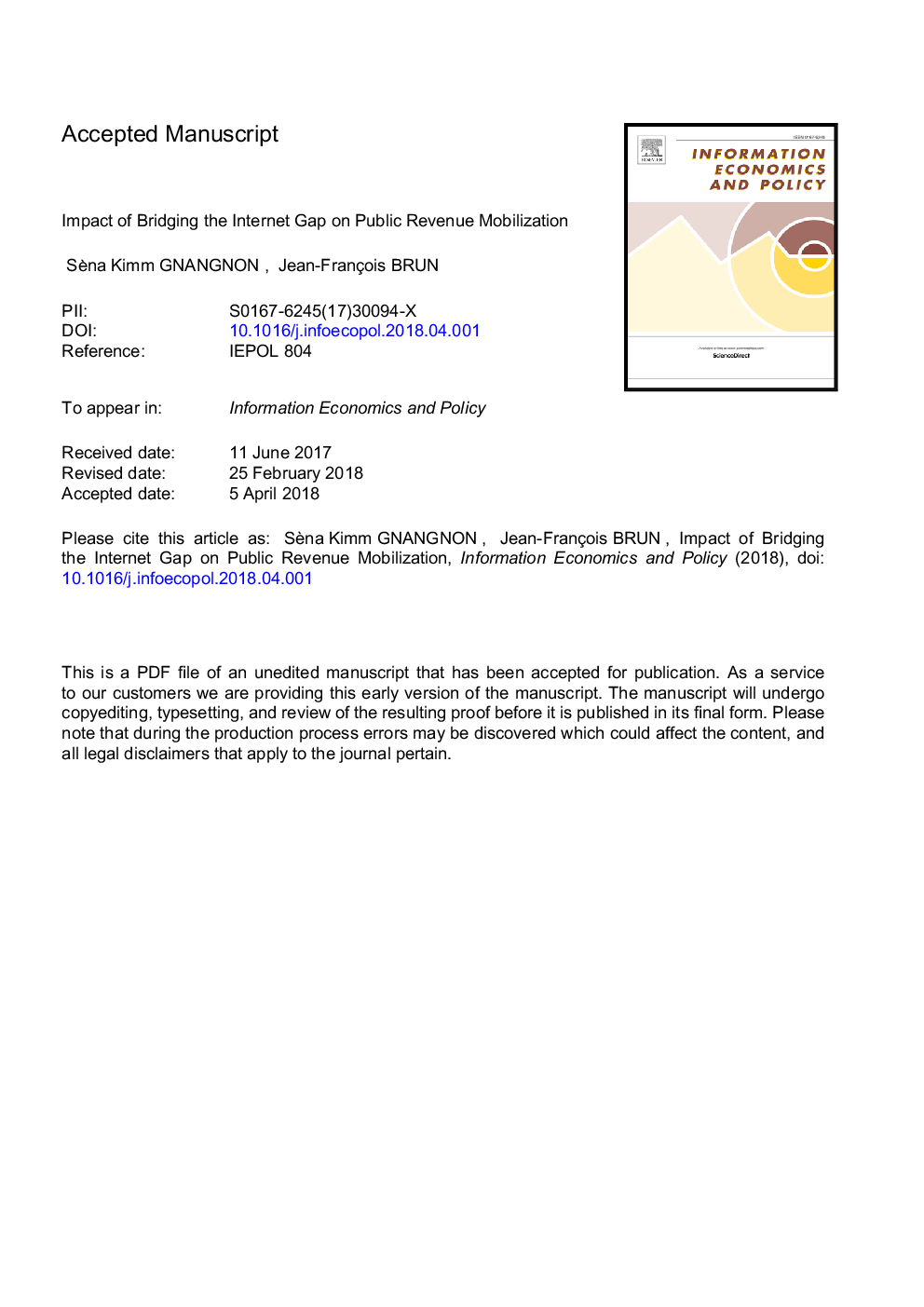| Article ID | Journal | Published Year | Pages | File Type |
|---|---|---|---|---|
| 7354365 | Information Economics and Policy | 2018 | 32 Pages |
Abstract
This paper contributes to the existing literature on the macroeconomic impact of Internet development by investigating how, for a given country, the reduction of the gap between its intensity of Internet usage and the world average Internet usage intensity influences its public revenue mobilization. The analysis covers 164 countries (including both developed and developing countries) for the period 1995-2013, and uses non-resource tax revenue as the measure of public revenue. The analysis was undertaken for the full sample as well as for several sub-samples, using the Generalized Methods of Moments (GMM) approach. The empirical results for the full sample suggest that when a country reduces the aforementioned gap, it experiences, over the short to medium term, a rise in non-resource tax revenue. The results also show that low-income countries (LICs) obtain the biggest positive impact by reducing this gap.
Related Topics
Social Sciences and Humanities
Business, Management and Accounting
Management of Technology and Innovation
Authors
Sèna Kimm Gnangnon, Jean-François Brun,
